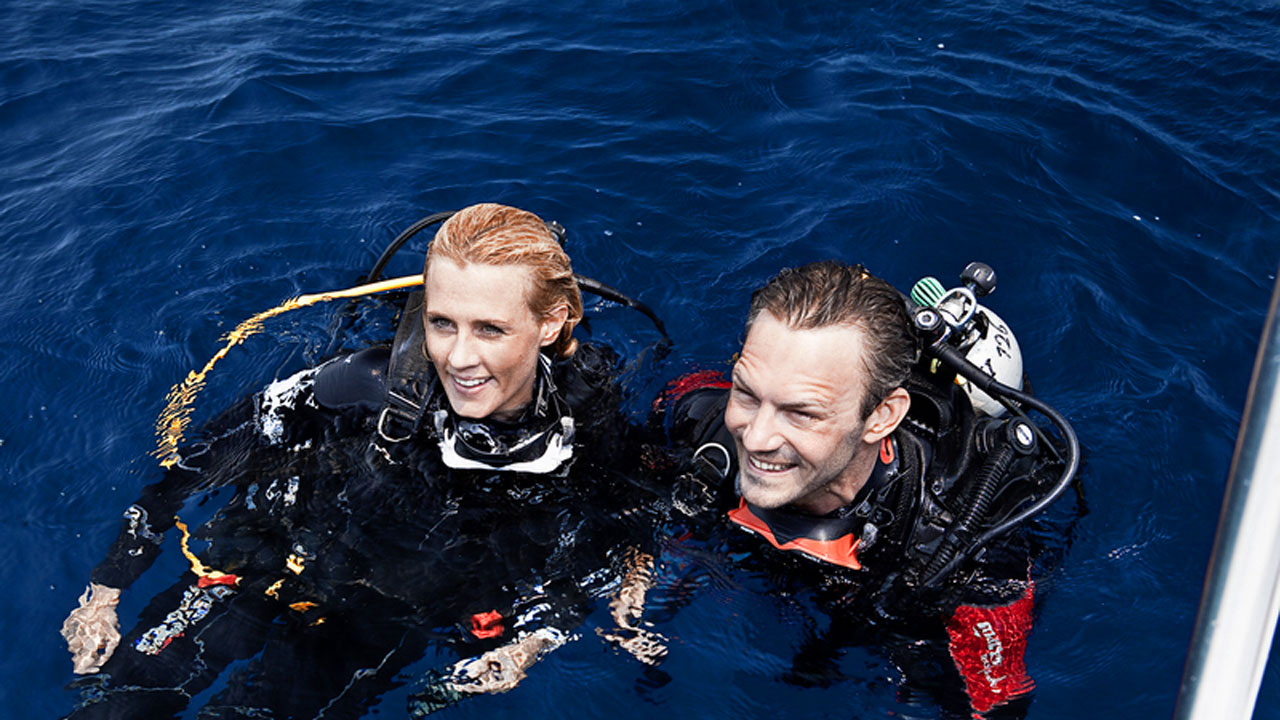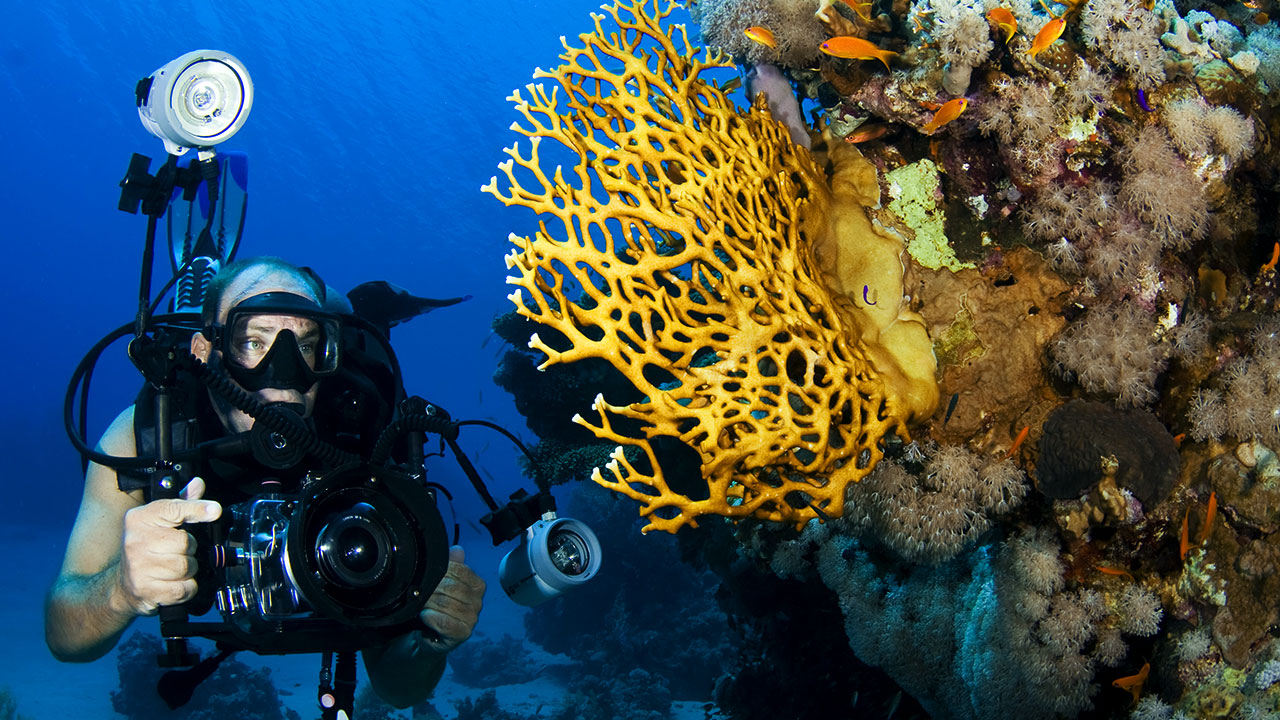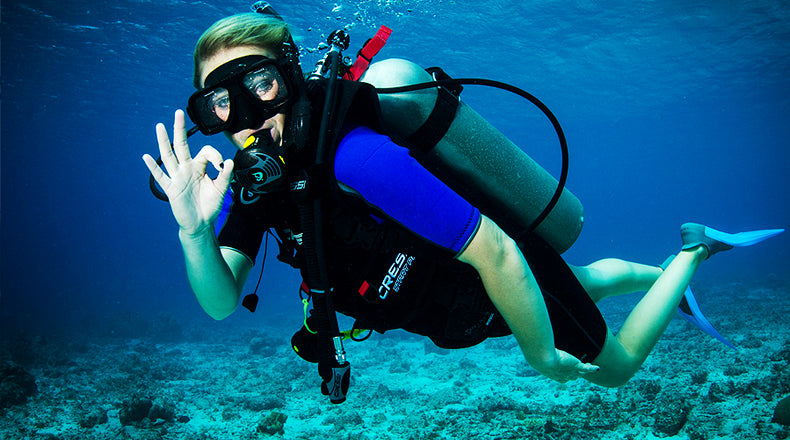Pre-Dive Equipment Check and Setup Guide

When you are about to dive underwater, your scuba gear is your life support, and having it properly setup is key to a safe and comfortable dive. Therefore, your pre-dive preparation and especially the equipment check shouldn’t be taken lightly. In case there are any equipment issues, it is important that you discover them before getting into the water.
The overall procedure of gear setup and inspection can be divided into three parts:
- Ensuring that all your equipment is ready for underwater performance;
- Gear assembly;
- Buddy check.
Remember, while it sometimes may seem redundant, taking a few extra minutes to double-check your equipment and having your buddy check it too is often very worth it. Even the most basic things that you have learned back during your first scuba certification course can be overlooked when caught up in the excitement of the forthcoming dive
Ensure That All Your Equipment Is Ready For Underwater Performance
The first thing you should do as a part of your pre-dive equipment check is to inspect all your gear for any issues or damage. This step is especially important if it’s your first dive of the season and you haven’t used your gear for a while.
On the infographic below you will see the example of a pre-dive equipment check.

Assemble Your Gear
Equipment setup is a basic skill that you have learned during your certification course and will need to perform before every single dive. Perhaps you already know it backwards and forwards, but just in case you need a reminder, here it is.
1. Secure Your BCD to the Tank
- Wet BC tank straps
- Slide the straps over the tank (make sure the top of the BC is even with the tank valve
- Tighten and secure BC straps
- Lift the tank by the BC shoulder straps to check that it’s fastened tight enough
2. Attach the Regulator First Stage to the Tank Valve
- Remove Tank Valve cover
- Unscrew the knob on the regulator first stage and remove the dust cover
- Attach the first stage to the tank with the second stage and octopus on the right side of the BCD and the console on the left
- Attach the inflator hose to the intake valve on your BC
3. Turn ON Air
- Turn your gauges face down and away from you.
- Using the other hand open the tank valve slowly.
- Open the tank valve completely and then turn back half a turn.
- Check pressure gauge for air pressure (with air-integrated computers, wet contacts).
4. Test Your Regulator and Octopus by pressing purge buttons and breathing through.
5. Secure Your Tank and BCD (Either lay the tank down with the BC on top or, if on the boat, secure it to the tank rack)
6. Put Your Wetsuit On
7. Prepare Weights
- If you use a weight belt, place it on the floor behind you with the buckle on the left side. Using both hands, hold each end of the belt and raise it to your waist. Pass the free end through the buckle and secure. The buckle should now be on the left so that it can be released with the right hand.
- If you use an integrated system, follow the manufacturer’s instructions.
8. Prepare Your Mask
- Use the defogger and rinse the mask thoroughly.
- Attach snorkel to the left side of the mask strap.
- When not in use, wear a mask around your neck, not on your forehead.
Perform a Buddy Check
Buddy check is another skill that you learn at the basic scuba certification course. Here are three forms of a scuba diver’s pre-dive safety check used by different scuba training agencies:
PADI - BWRAF
B - BCD. Test the inflator and deflator of your BCD, operate all dumps, check that all straps are lying flat and have no slack.
W - Weights. If the diver uses a weight belt, make sure that it is secure, and the strap can be easily released with the diver’s right hand. In case the integrated system is used, test it for adequate operation. Make sure you and your buddy both know how each other’s systems work so that you are able to operate them in an emergency.
R - Releases. Locate and check all of your buddy’s releases (this usually includes the velcro waistband, stomach and chest clips, at least two shoulder clips and the tank clip). Make sure all of the releases are properly secured and you know how to undo them in case of emergency.
A - Air. Check if the air valve on the tank is open. Try to breathe through the primary and secondary regulators, at the same time looking at the pressure gauge. When breathing, the SPG should not drop. Check hoses for damage. Place the octopus in the triangle between the chin and the base of the diver’s ribs.
F - Final Check. Perform a final check of the diver. See if all the hoses are clipped neatly, and are in the correct configuration. Make sure the diver has everything he/she needs for the dive.
To help remember this pre-dive check, PADI uses a mnemonic Begin With Review And Friend. However, divers have come up with quite a few different mnemonics of their own, here are some examples:
- Beans With Rice And Fish
- Bruce Willis Ruins All Films
- Breathing Water Really Ain’t Fun
- Big White Rabbits Are Fluffy
- Burgers With Relish And Fries
- Bunnies Will Run Away Fast
Do you know any other fun mnemonics? Please do share yours in the comments.
BSAC - BAR
B - Buoyancy. Test each buoyancy device, such as a buoyancy compensator or drysuit, going through the same pattern as described above.
A - Air. Check if each air source functions properly. If the diver uses a rebreather let him/her breathe from the loop for two or three minutes before entering the water.
R - Releases. Check all the releases as described above.
NAUI - SEABAG
S - Site. Assess the weather and tidal conditions of the chosen dive site. Identify the site’s characteristics such as depth, currents, hazards, and common marine life. If the conditions are unfavorable, postpone or cancel your dive.
E - Emergency. Discuss the established emergency procedures, make sure you know where the first aid kit is located and how to contact emergency personnel.
A - Activities. Agree on the maximum depth, dive time and objective, navigation pattern, etc.
B - Buoyancy. Check all buoyancy devices and weights.
A - Air. Both buddies should check each other’s first and second stages, as well as know Surface Air Consumption (SAC) rates and the amount of air available at the beginning of the dive.
G - Gear and Go.
Whichever form you use, inspect the equipment carefully and make sure to also check any additional gear you and the other divers may need, such as surface buoys, dive torches, or line reels.





Blue Whales Really Are Friendly
Be With Reefs And Fish